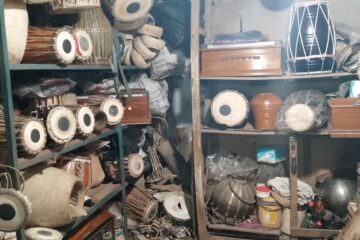Dol is the last sanatoni festival of our season. During leaf fall, waiting for Boishakh. At this time there is a social significance in gathering the dead leaves of fallen trees, and their branches and burning them.
Dol Purnima or Dol Yatra, is an important religious and colorful festival for Sanatan Hindus. Apart from Bengal and Odisha, Dol Utsav is celebrated in grand style in various parts of India. In other parts of the country, especially in North India, Dol Yatra is known as Holi. But even if the two things are the same, there is another reason behind it. But another name for Dol Utsav is Basantotsav. Which is world-famous in Santiniketan. Dola Yatra is held every year on the full moon tithi of Falgun month.
From young to old, everyone joins in the festival of colours and the fun ends with sweet faces after playing with colours. Currently, Holi festival is celebrated in different parts of India. Not only that, its prevalence can be seen among foreigners outside the country. On the day of Dol Purnima, everyone paints themselves in the colours of Holi, forgetting all differences and becoming one. Dol or Holi means the same but two different events. Dol and Holi never fall on the same day. Dol Yatra or Basantotsav is a colorful festival of Bengalis. And Holi is the festival of non-Bengalis. Dola Yatra is considered the auspicious sign of spring among Bengalis.
According to Vaishnavas, on the day of Dola Purnima, Lord Krishna was intoxicated with Abir and playing with colours with Lord Radha and other gopis. From there the swing begins. The festival also commemorates the birth of Sri Chaitanya Mahaprabhu on February 18, 1486, Dola Purnima Tithi. This tithi is also called Gaur Purnima. However, the main focal point of this Dola Yatra is the event of Lord Krishna and his companions playing with colours with the gopis. It is not known when Shri Krishna’s Leela started, but various Puranas and texts mention that sweet and colourful story.

Also, Hindu mythology mentions the practice of the Holi festival in Gokula by Indradyumna, about 2 thousand years ago. But history tells us that Indradyumna’s name appears multiple times in ancient India. So there is a debate about who this Indradyumna was.
Again on the spring full moon day, Lord Krishna killed a demon named Keshi. Keshi was a tyrannical and cruel demon. For this, this day is celebrated in Ananda Utsava to subdue this tyrannical demon and destroy the evil forces.
Prahlada was pious. So it was not easy to kill him. There was no way he could be killed. Then Hiranyakashipur ordered his son to be burnt. On the other hand, Holika got the boon of never being harmed by fire. So to kill Prahlada Holika decides to jump into the fire with Prahlada. And she jumped into the fire one day with Prahlada in her arms.

But despite getting Holika’s boon, that day was not saved. Prahlad survived with the blessings of Vishnu. But Holika got burnt in the fire. As she abuses her groom, her groom perishes while jumping into the fire and she burns to ashes. Holi or Dol festival is celebrated from that day. This story of Holika is known as Chanchar or Holika Dahan, which is celebrated on the eve of Dol. Or what is commonly referred to as stirring. The old woman’s house is made with dry branches, and dry leaves of trees on the day of shaking. And for Holika, Holikadhan is celebrated by burning that house with fire.
Many make clay dolls for Holika and keep them in the house and burn them. People celebrate that day in different ways. And the next day is Dol Utsav.




